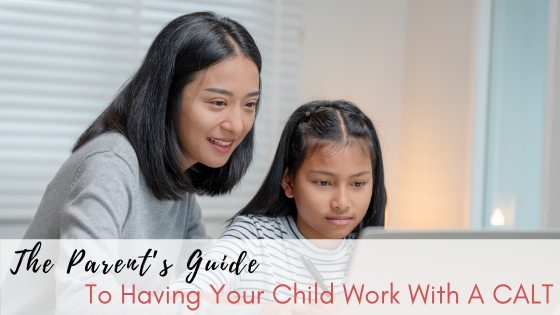
The Parent’s Guide To Having Your Child Work With A CALT
As parents, we are in charge of managing and providing so much for our children. There’s the basics like food, shelter, and clothing. We make all kinds of decisions each day in hopes that we are giving our children exactly what they need. Of course, there are also some big things to consider when we make daily choices for our children when it comes to things like their education. When you’re a parent of a child with a specific learning disability like dyslexia, you have more choices to make in order to seek help for your student. Some parents choose to hire tutors or to rely on school-based services for dyslexia help; however, for families seeking extra help for students with dyslexia, Certified Academic Language Therapists (CALTs) are an invaluable resource. Read on to discover the parent’s guide to having your child work with a CALT.
CALTs are specially trained. Certified Academic Language Therapists go through rigorous training and education. They must earn a Master’s degree as well as complete a two-year comprehensive therapy-level training. These training programs include a minimum of 200 instructional hours that cover the theory and application of structured literacy approaches for dyslexia. In addition, CALTs need to get hand-on experience by completing 700 clinical teaching hours in which they work directly with students with dyslexia. CALTs also must do demonstration lessons. More requirements for CALTs include passing a national board certification exam as well as specific licensing, which can vary state-by-state. The focus of CALT training includes a deep understanding of the structure of the English language, mastery of multisensory structured language instruction methods, Orton-Gillingham based instruction, as well as assessment and intervention strategies and effective teaching practices.
Assessments are essential. CALTs will often administer an initial assessment of a student in order to get an understanding of the student’s specific strengths and weaknesses in areas like reading, writing, and spelling. CALTs take the time to review comprehensive evaluations and informal evaluations, as well as academic samples. Based on this, CALTs can create a personalized plan for dyslexia therapy that targets a student’s specific needs.
There is a focus on structured literacy. Structured literacy approaches break down language skills into smaller, more manageable parts for students. CALTs help students to learn things like phonemic awareness, phonics, morphology, and vocabulary in a rule-based fashion that not only gives them a tool kit to apply in their day to day world, but also creates the long-term neural pathways needed for their brains to convert this knowledge to an automatic level.
CALTS get the senses involved. Dyslexia therapy sessions often incorporate visual, auditory, and kinesthetic senses. This incorporation of multisensory teaching helps to make learning more effective and engaging for students.
Monitoring progress is essential. Throughout your student’s dyslexia therapy journey, CALTs will continue to conduct regular assessments of your student’s progress. This will help to see how effective dyslexia therapy is, and it will help with how to plan for future dyslexia therapy sessions.
Consistency is key. Working one-on-one with a CALT consistently helps to create a safe and encouraging space for your student to learn. At Dyslexia on Demand, our goal is to have students work consistently with the same CALT for their dyslexia therapy journey. This creates an environment of comfort and connection for students and CALTs alike.
Taking time helps with results. Dyslexia therapy is not a quick fix; sessions with CALTs occur at a high frequency over a sustained period of time. This intensive approach that includes meeting multiple times per week has proven most effective for students with dyslexia.
There is a focus on specific skills. When your student works with a CALT, they will get help with explicit understanding and application of English language structure. Through dyslexia therapy, they will work on things such as phonology, morphology, syntax, semantics, pragmatics, and orthography. Improving all of these skills will boost students’ oral and written language skills including comprehension, fluency, accuracy, spelling, and written expression.
Collaborate with the team. CALTs aim to partner with parents in order to have the best chance at success. Having clear communication and connections between dyslexia therapy and home can help students to succeed as well. Parents play an important part in the process of dyslexia therapy, as they can offer encouragement, advocacy help, and academic support too.
Be part of a trusted program. At Dyslexia on Demand, CALTs are trained to work with students using therapeutic grade dyslexia intervention programs. The programs at Dyslexia on Demand include Take Flight and Basic Language Skills; these are Orton-Gillingham based programs that have been foundational in the treatment of dyslexia.
At Dyslexia on Demand, we believe that every child should have an opportunity to be academically successful. Having dyslexia can be challenging for a child, but working closely with a Certified Academic Language Therapist is such a great solution.
Does your child need one-on-one help? Connect with the experts at Dyslexia on Demand. You can call 888-292-3906, or you can visit our website to learn more about why dyslexia therapy is the best option available for students with dyslexia.




